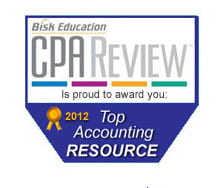Ted Weschler Explains Berkshire Hathaway’s Investment in Apple to German Magazine
In a press release sent to me and dated October 21, 2016 by Manager Magazin, a German monthly business magazine based in Hamburg, Germany, Ted Weschler explains the rationale behind Berkshire Hathaway’s (NYSE:BRK.A) (NYSE:BRK.B) investment in Apple (NASDAQ:AAPL). (Note: AAPL closed at $116.60 per share on October 21, 2016.)
The press release states:
Berkshire’s Weschler explains pioneering tech investment in Apple
Warren Buffett’s portfolio manager was attracted by “subscription element” in business model
Apple has elements of a subscription model that protects it from competition and could keep margins elevated for the long term, according to major investor Berkshire Hathaway. That is a large difference to former smartphone competitors Nokia, Blackberry and Motorola, Berkshire portfolio manager Ted Weschler told German business publication “manager magazin” (in an interview published on October 21, 2016). “It is cleaner to make the argument on Apple versus the past names that there is a subscription element to it”, Weschler says.
Berkshire invested $1 billion in Apple shares at an average price of $99.49 per share in the first quarter of 2016 and increased the position to almost 1.5 billion dollars during the second quarter. It is a pioneering foray into a Silicon Valley tech stock for the company run by Warren Buffett, who has said that he would not know how to value such business models. In 2012, former hedge fund manager Weschler was picked by Buffett as a portfolio manager alongside Todd Combs. Buffett has said that Apple has not been his personal investment decision. “We haven’t disclosed whose position Apple is. But I have been following Apple a long, long time”, says Weschler.
In the first detailed explanation of Berkshire’s investment thesis for Apple, Weschler says that the smartphone business had been transformed by the app economy and cloud computing. “As network speed has gotten faster and faster, and with it the information that people can absorb on the network, things like photo applications, and apps, they create a stickier ecosystem”. Statistics showed that there was a high likelihood iPhone or iPad buyers would also purchase their next device from Apple, he added: “Once you are fully invested in the App ecosystem and you have got your thousands of photographs up in the cloud and you are used to the keystrokes and functionality and where everything is, you become a sticky consumer.”
Reporter: Mark Böschen
Phone: +49 151 4260 7425
Email: mark.boeschen@manager-magazin.de
Hamburg, October 21, 2016



